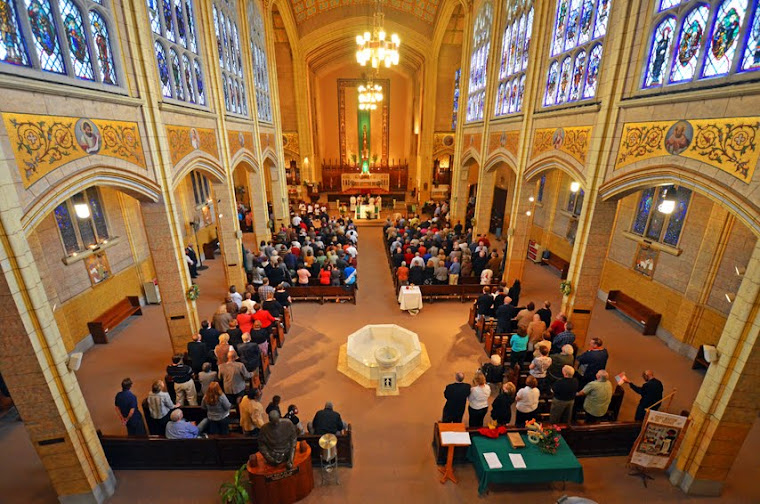We received a note
from Fr. Edward McKenna, Associate Pastor at St. Thomas Aquinas (1965-1974) --
the last three years as Administrator of the Parish – and now a Senior Priest
with the Archdiocese of Chicago.
Unfortunately, for us, he will be embarking on a chaplaincy for a cruise
on September 30th. He calls
this “a priest’s luxury vacation on the cheap!”
He shared the following memory:
I was never happy with the decision by the Office of Divine
Worship committee to cover with beige paint the only known replica/copy of
Francisco de Zurbaran's Apoteosis de
Santo Tomás de Aquino that graced the back wall of the sanctuary. An
arrogant "expert in liturgy" made the decision to modernize [the]
sanctuary, and had no thought of the artwork!
[Cardinal] Bernardin's renovation money was well
intended; and I am proud of the present condition of the church, with all
the surrounding parishes destroyed! It was a difficult time to be ‘pastor/ administrator’
and Cardinal Cody was always at a distance with the complex problems we had to deal
with.
That it's all going today is a kind of miracle!
I bet a future redecoration could remove the offending paint
and restore the original! Oh, those
progressive liturgists of yore.”
All the best with the beloved STA groupies!
Fr. Edward
Thanks Fr. Edward for
your memories and best wishes for our September 30 reunion. We hope you, too, have a grand time on your
cruise!
Additional
information about the original painting:
In 1627, Franciso
de Zurbarán (1598-1663) began
the painting of the great altarpiece of St. Thomas Aquinas, now in the Museum
of Fine Arts of Seville. It was executed
for the church of the college, also named St. Thomas Aquinas, and completed in
1631. This is Zurbarán’s largest
composition, containing figures of Christ, the Madonna, various saints, Charles
V with knights, and Archbishop Deza (founder of the college) with monks and
servitors, all the principal personages being more than life-size.
The style is
baroque and the original painting is 486 x 385 cm or approximately 16 feet by
12 ½ feet.
Sources: Wikipedia.com
and HISTORIA DE LA PINTURA ESPAÑOLA http://www.deyave.com/Arte/Pintura/historia-de-la-pintura-espanola/7-sigloXVII-Zurbaran.htm


No comments:
Post a Comment